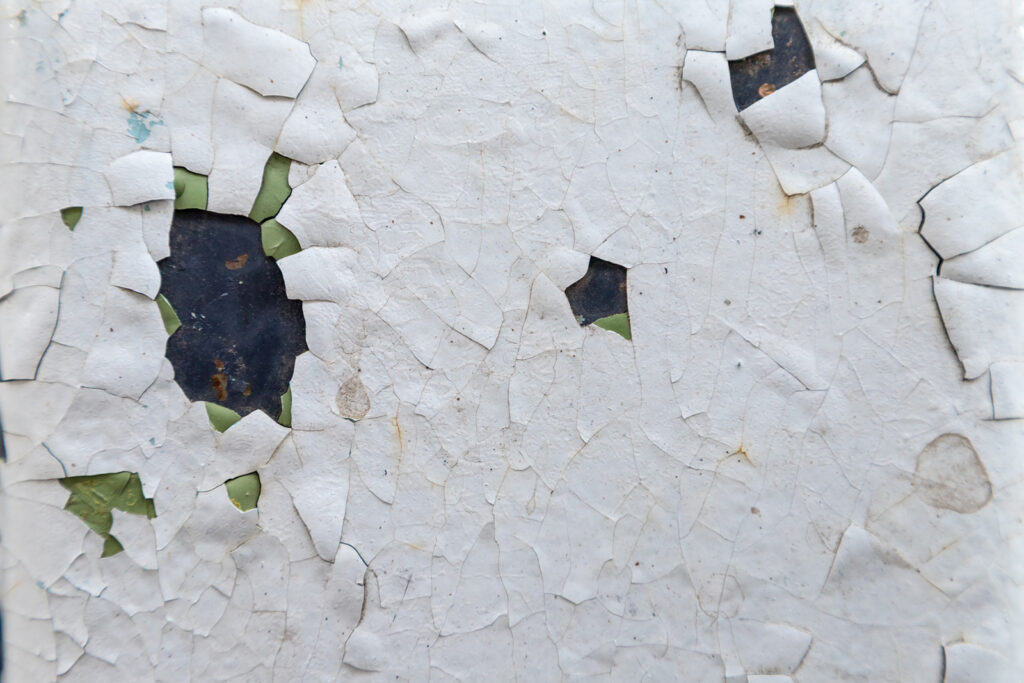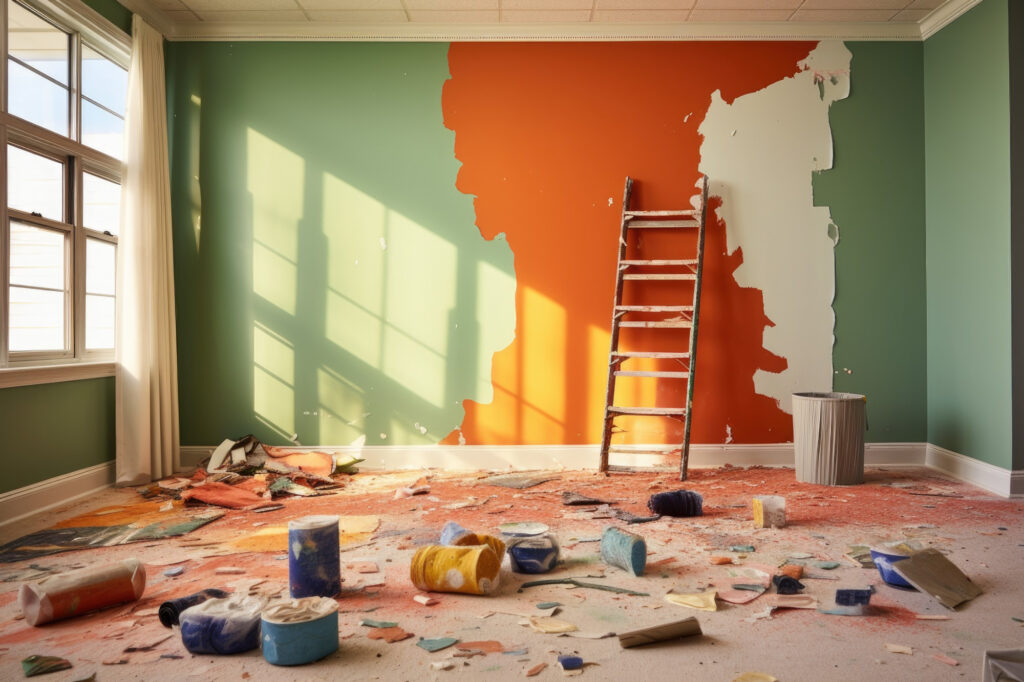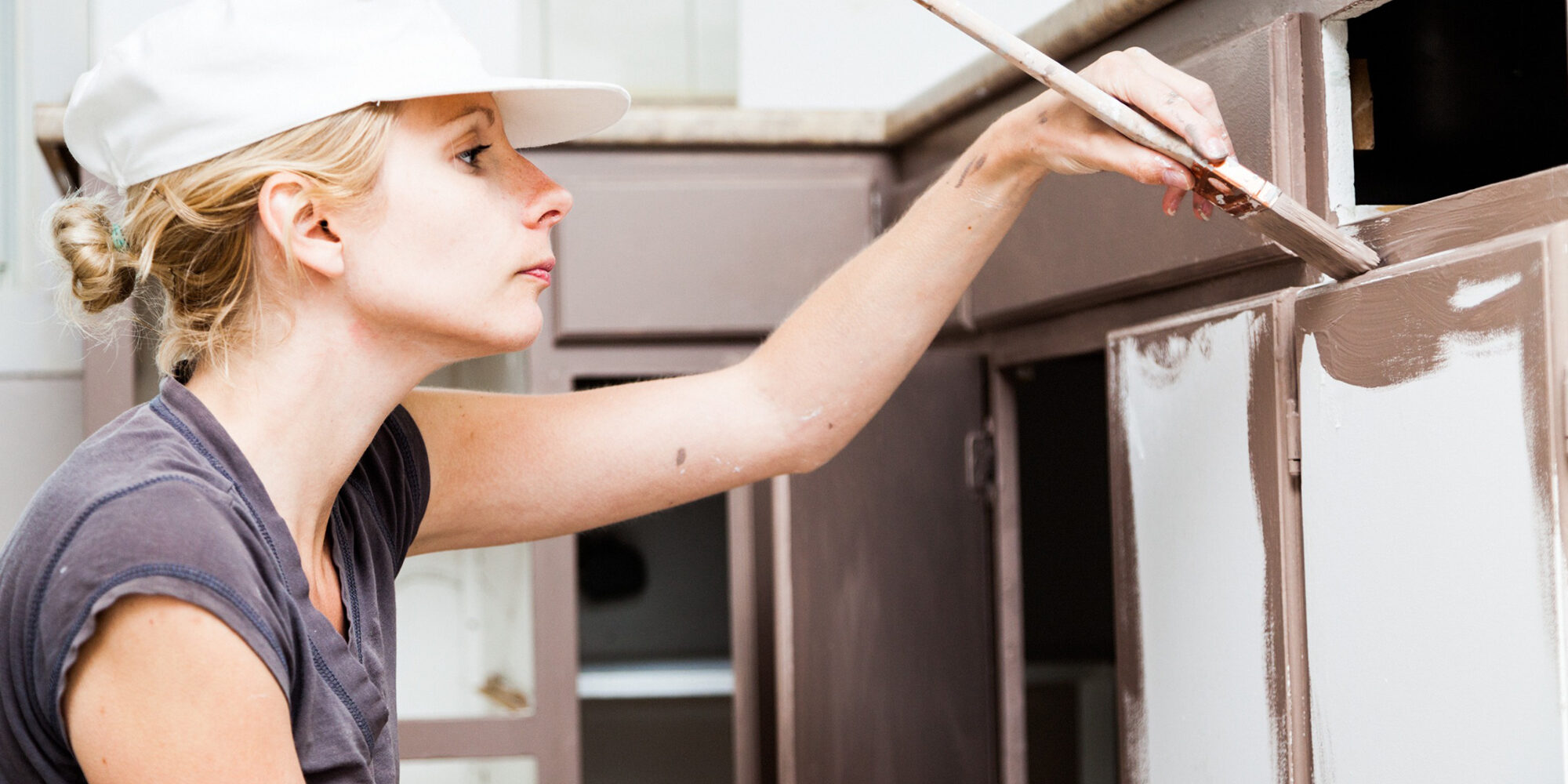A freshly painted wall can completely transform a room, but sometimes things don’t go as planned. Paint issues can arise during or after the project, leaving you frustrated and wondering what went wrong. The good news is that many common paint problems are easy to fix! Let’s dive into the most common paint problems homeowners in Lexington, KY, face and how you can address them.
1. Peeling or Cracking Paint
Problem: One of the most common paint issues is peeling or cracking, often caused by poor surface preparation, moisture, or old paint.
Solution: To fix peeling or cracking paint, you’ll need to start by scraping away the damaged paint using a paint scraper. Once the surface is clear of peeling paint, sand the area to smooth out any rough paint edges left. Next, clean the surface to remove any dirt or grease. After the surface is dry, apply a coat of primer, followed by your topcoat of paint. Ensure that the paint you’re using is suitable for the surface and apply it in thin, consistent layers to prevent cracking.

2. Blistering or Bubbling
Problem: Blistering or bubbling can happen when moisture gets trapped beneath the paint or when the paint is applied too thickly. This can lead to unsightly bubbles or blisters that ruin the finish.
Solution: To fix this issue, first remove the bubbles by scraping or sanding them down. Then, identify the root cause of the problem—usually trapped moisture or excessive heat. If the issue is moisture, allow the surface to dry completely before repainting. Make sure the area is well-ventilated and the humidity levels are low when painting. Once the surface is prepped, apply primer and paint in thin, even coats.
3. Streaking or Roller Marks
Problem: Streaking or roller marks are often caused by using the wrong roller cover or insufficient paint application. Uneven pressure when using the roller can also create visible lines and streaks.
Solution: To avoid streaking, always use a high-quality roller cover that is specifically designed for your wall texture. Choose a roller with a nap length that matches your surface—short nap for smooth surfaces and longer nap for textured surfaces. When applying the paint, work in small sections, maintaining a wet edge to prevent roller marks. If you notice streaks while painting, smooth them out immediately with a dry roller.

4. Paint Drips and Runs
Problem: Paint drips or runs are typically caused by applying too much paint in one area or using too much pressure on the roller or brush. These drips can create uneven coverage and a messy finish.
Solution: If you catch the drips while they’re still wet, use a clean brush to smooth them out. If the paint has dried, carefully scrape off the excess paint using a scraper or putty knife. Sand the area smooth and touch up the finish with a new coat of paint. For future projects, be mindful of applying paint in thin, even layers, especially in areas like edges and corners.
5. Fading or Discoloration
Problem: Over time, paint colors can fade, especially when exposed to sunlight. This is more common with lighter colors or paints that are not UV-resistant.
Solution: The best way to prevent fading is to choose paint formulated for high-UV resistance. For existing paint that’s faded, you’ll need to clean and prime the surface before applying a fresh coat of paint. If you’re repainting a sun-damaged area, consider using a paint that includes a UV-resistant formula or adding a UV-protectant finish over your new paint.
6. Mildew or Mold Growth
Problem: Mildew and mold thrive in damp, humid environments and can quickly appear on painted surfaces, especially in areas like bathrooms or basements. This often results in unsightly black or green spots.
Solution: To prevent mold and mildew, ensure that the area is properly ventilated, and use mildew-resistant paint in high-humidity areas. If mold or mildew is already present, mix a solution of one part bleach to three parts water and scrub the affected area with a sponge or brush. Once cleaned, allow the area to dry thoroughly before applying a coat of mildew-resistant primer and paint.
7. Uneven Coverage
Problem: If the paint looks patchy or doesn’t fully cover the surface, it may be due to applying too thin a coat, using low-quality paint, or painting over a dark color without primer.
Solution: The easiest way to fix this is to apply additional coats of paint. For better coverage, use a high-quality primer that’s compatible with your paint color. If you’re painting over a dark color, make sure to use a primer designed for color-blocking or deep stains. Applying multiple thin coats of paint will always produce a smoother, more even finish than a single thick coat.

Fix Your Paint Problems with Professional Lexington Painters
No matter the paint problem, My Three Sons Professional Painting & Remodeling is here to help you achieve a flawless finish. We’re experts in solving common paint issues and can ensure your project is completed with the highest quality and precision. Our Lexington, KY home painting services are reliable and professional.
Ready to fix your paint problems or give your home a fresh coat of paint?
Call us today at 859-321-7344 for a free estimate and let our team guide you through every step of the painting process. Or schedule your own appointment online by clicking here.
Our skilled team guarantees excellent results and long-lasting beauty for your walls!








